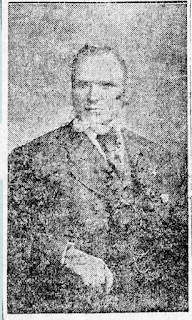Answers to the Mystery at Port Eynon
 |
| St. Cattwg’s Church |
Everyone enjoys a good mystery. Here's the answer to the Port Eynon church enigma.
On December 7th, 1914, the Cambrian Daily Leader published an article detailing the burial of
the last surviving veteran of the Indian Mutiny at St. Cattwg’s Church in Port
Eynon.
Who was this man?
 |
| St. Cattwg’s Church Burial Register |
Did the Cambrian Daily Leader delay publishing the
article that appeared in print on the 5th of December?
The 1911 Census records that Silvanus was living at
Sycamore, Overton, Port Eynon
 |
| 1911 Census |
Silvanus, aged 80, managed a farm and resided with his wife,
Ann, who is 79 years old. Also present
at the farm was their servant, Mary Jane Clark, aged 21.
So, it can't be Silvanus.
Researching the Cambrian
Daily Leader, an article entitled “Mutiny Veteran’s Death” was published
on December 3rd.
 |
| John Clarke |
The 1911 Census records that John was living at Park View,
Lime Street, Gorseinon.
 |
| 1911 Census |
John, aged 74, was born in Penclawdd and is an Army
Pensioner. Jane is aged 70. Additionally, there is the presence of
Sons, John Oliver, 34, and Israel James, 31, who are
employed as tin plate packers.
Also present are the son-in-law, George Anthony Curnow, aged
30, who serves as a Police Constable with the Glamorgan Constabulary, and his
wife, Edith Jane, aged 28.
 |
| Cambrian Daily Leader |
 |
| Cambrian Daily Leader |
John died at his residence, Park View, Lime Street,
Gorseinon, on the 1st. His
funeral was on the 5th, leaving his residence.
An additional article published in the subsequent edition of
the Cambrian Daily Leader provided a more detailed account of John
Clarke.
 |
| John Clarke Kingsbridge Cemetery, Gorseinon credit - findagrave |
A search on findagrave shows John was buried on
December 5th at Kingsbridge Cemetery, Gorseinon
So, there was an editorial error in the article published on
the 7th, in stating St. Cattwg’s Church


Comments
Post a Comment